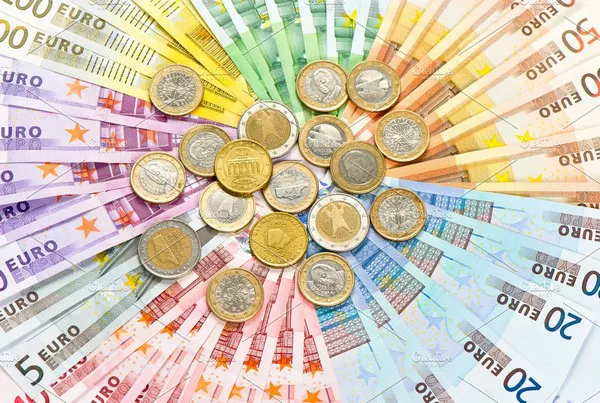Exchange rates are a vital barometer of a country’s economic health, international trade dynamics, and global market sentiments. Over the years, the euro to dollar exchange rate (EUR/USD) has experienced fluctuations influenced by a myriad of factors, including economic indicators, monetary policies, geopolitical events, and investor sentiment. In this in-depth article, we delve into the annals of currency exchange history to uncover the highest euro to dollar exchange rate ever recorded, examining the factors that contributed to this historic milestone.
Understanding the Euro to Dollar Exchange Rate
The euro (EUR) and the US dollar (USD) are two of the world’s most widely traded currencies. The exchange rate between these two currencies, represented as EUR/USD, tells us how many US dollars are needed to purchase one euro. For instance, if the EUR/USD rate is 1.20, it means one euro can be exchanged for 1.20 US dollars.
Exchange rates are influenced by a multitude of factors, including:
1. Interest Rates: Divergence in interest rates between countries can attract capital flows, affecting exchange rates. Higher interest rates typically attract foreign investments and strengthen a currency.
2. Economic Indicators: Economic data such as GDP growth, unemployment rates, and inflation can influence investor sentiment and, consequently, exchange rates.
3. Central Bank Policies: Central banks’ monetary policies, including interest rate decisions and quantitative easing measures, play a significant role in shaping exchange rates.
4. Geopolitical Events: Events such as trade disputes, geopolitical tensions, and global conflicts can influence investor confidence and impact exchange rates.
5. Market Sentiment: Speculative trading and investor sentiment can lead to short-term fluctuations in exchange rates.
6. Balance of Payments: A country’s trade balance, including exports and imports, affects its currency’s strength. A trade surplus can strengthen a currency, while a deficit can weaken it.
Exploring the Highest Euro to Dollar Exchange Rate
To find the highest-ever EUR/USD exchange rate, we need to look back at historical exchange rate data. This historical peak occurred in the aftermath of the euro’s introduction as a currency on January 1, 1999.
The highest recorded EUR/USD exchange rate was approximately 1.5990. This historic milestone was reached on July 15, 2008, during a period of significant turbulence in global financial markets. Several factors contributed to this unprecedented surge in the euro’s value against the US dollar.
Factors Influencing the Record-High EUR/USD Exchange Rate
1. Global Financial Crisis: The global financial crisis of 2007-2008, triggered by the collapse of Lehman Brothers and the ensuing credit crunch, had far-reaching implications for financial markets. As investors sought refuge from the turmoil, the euro temporarily emerged as a safe-haven currency.
2. US Financial Weakness: The crisis originated in the United States, where the bursting of the housing bubble led to a severe recession. As the US economy struggled, investors flocked to other currencies, including the euro, leading to a temporary spike in its value.
3. Divergence in Monetary Policies: The European Central Bank (ECB) and the Federal Reserve (Fed) implemented different monetary policies during the crisis. The ECB’s more conservative approach and emphasis on price stability contrasted with the Fed’s aggressive rate cuts and quantitative easing measures. This divergence attracted capital flows into the eurozone, further strengthening the euro.
4. Flight to Safety: The crisis led to a “flight to safety” phenomenon, where investors sought refuge in currencies perceived as stable. The euro temporarily benefited from this sentiment.
5. Oil Prices: Soaring oil prices during this period boosted the revenues of oil-exporting countries, some of which held euro-denominated assets. This increased demand for euros, contributing to the currency’s appreciation.
6. Technical Factors: Speculative trading and technical factors played a role in the rapid ascent of the euro. As the currency gained momentum, traders who had bet against the euro rushed to cover their positions, leading to a surge in demand.
The Aftermath and Subsequent Movements
The record-high EUR/USD exchange rate of 1.5990 was short-lived. As the financial crisis deepened and the economic fallout became more apparent, investors’ focus shifted, leading to a reversal in currency movements.
1. Financial Crisis Intensifies: The global financial crisis continued to worsen, with financial institutions facing insolvency and economies contracting. Investor sentiment deteriorated, causing a flight from riskier assets, including the euro.
2. ECB Intervention: The European Central Bank intervened in currency markets to curb the euro’s rapid appreciation. ECB actions included verbal interventions and monetary policy measures to address concerns about the currency’s strength.
3. Eurozone Debt Crisis: In the following years, the euro faced additional challenges, notably the Eurozone debt crisis that began in 2009. Concerns about the fiscal health of certain Eurozone member countries, including Greece, Portugal, and Ireland, led to increased volatility in the currency.
4. Exchange Rate Normalization: As the global economy stabilized and central banks implemented various measures to address the financial crisis, the EUR/USD exchange rate returned to more typical levels.
5. Ongoing Fluctuations: Since the global financial crisis, the EUR/USD exchange rate has experienced ongoing fluctuations influenced by a range of factors, including economic data releases, central bank policies, geopolitical events, and market sentiment.
Conclusion
The highest-ever euro to dollar exchange rate of approximately 1.5990, reached in July 2008, remains a remarkable moment in the annals of currency exchange. It was the result of a confluence of factors, including the global financial crisis, divergence in monetary policies, flight to safety, and technical trading dynamics.
While the euro reached this historic high, it was short-lived, and subsequent events, including the Eurozone debt crisis, underscored the currency’s vulnerability to economic challenges. Exchange rates are dynamic and influenced by a multitude of factors, making it crucial for businesses, investors, and policymakers to closely monitor currency markets and adapt their strategies accordingly.
Understanding the factors that led to the highest-ever EUR/USD exchange rate provides valuable insights into the complexities of currency markets and the significance of global economic events in shaping exchange rate movements.


